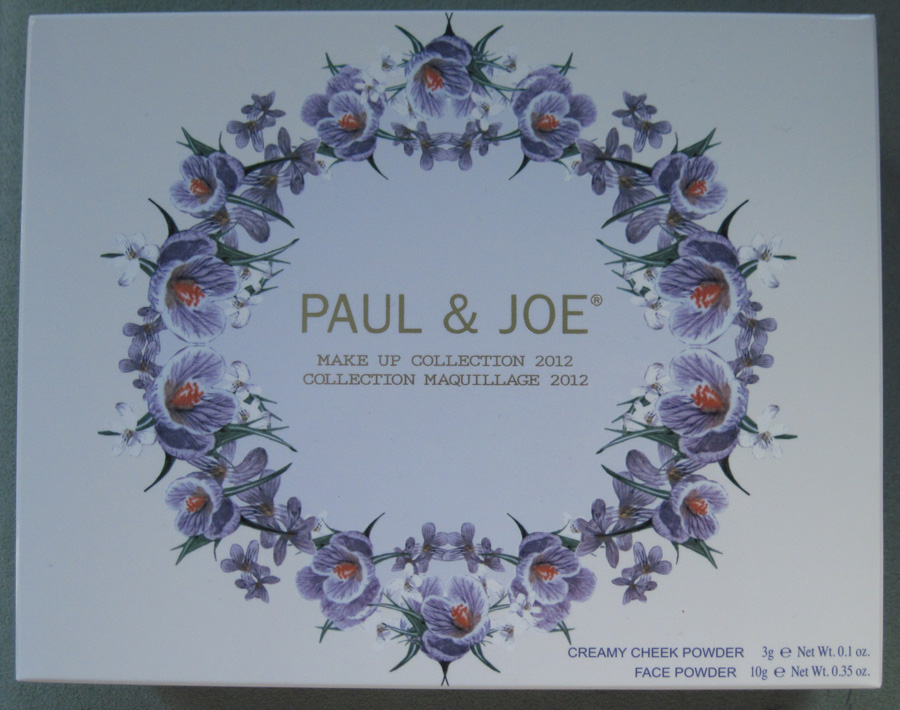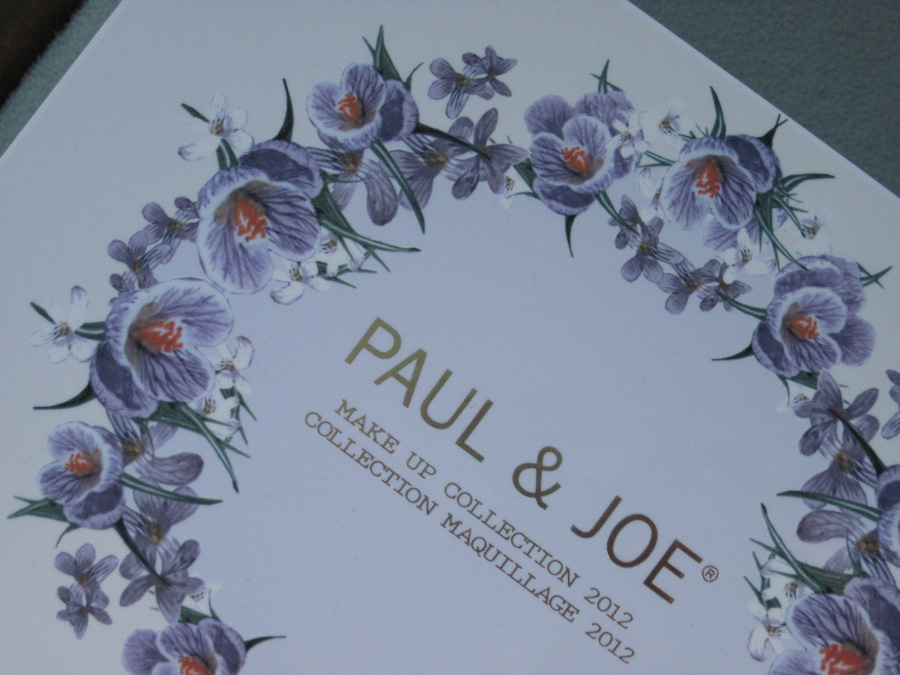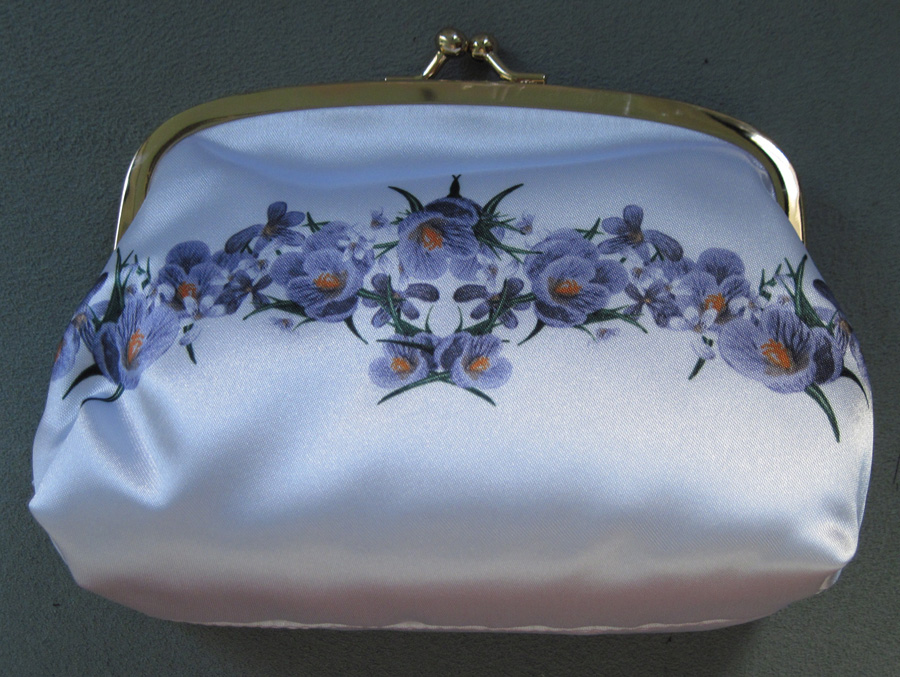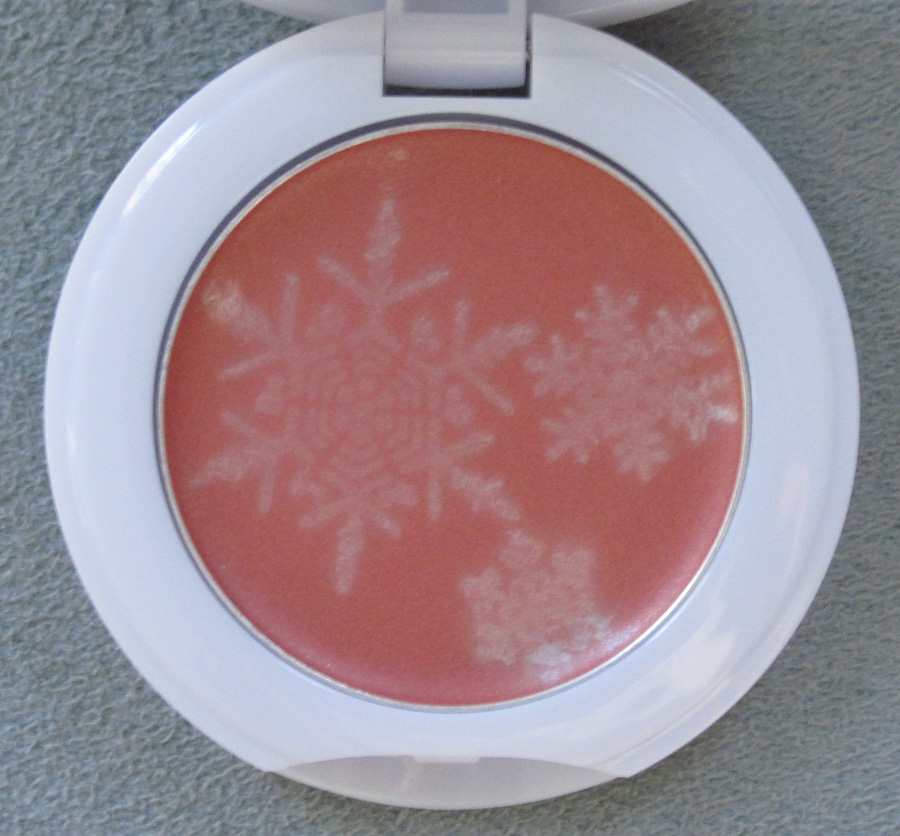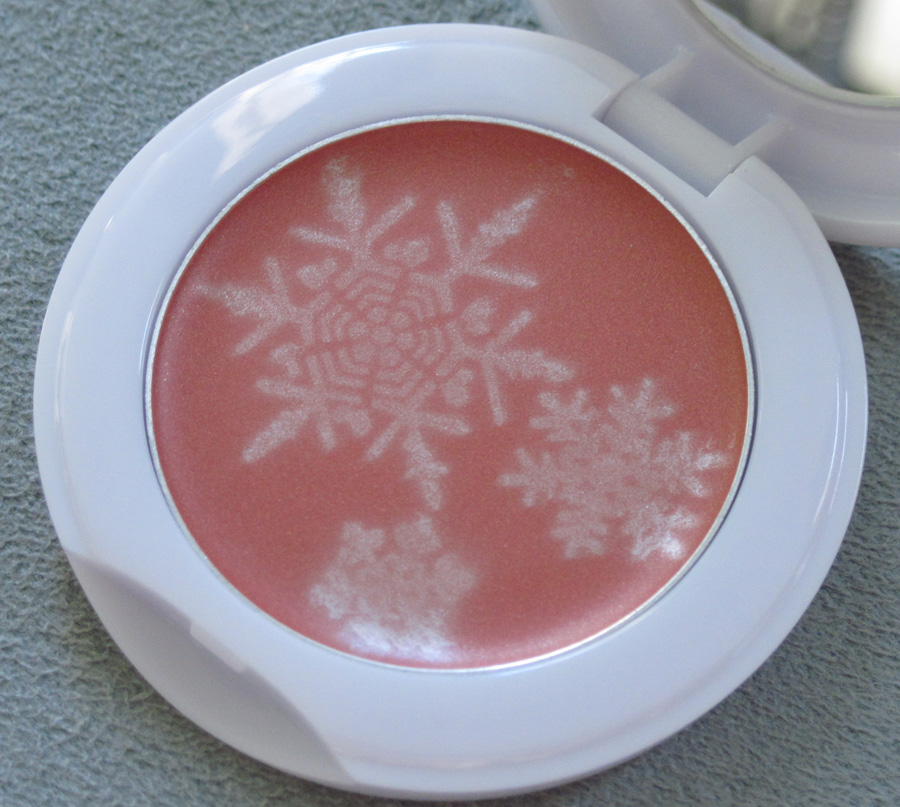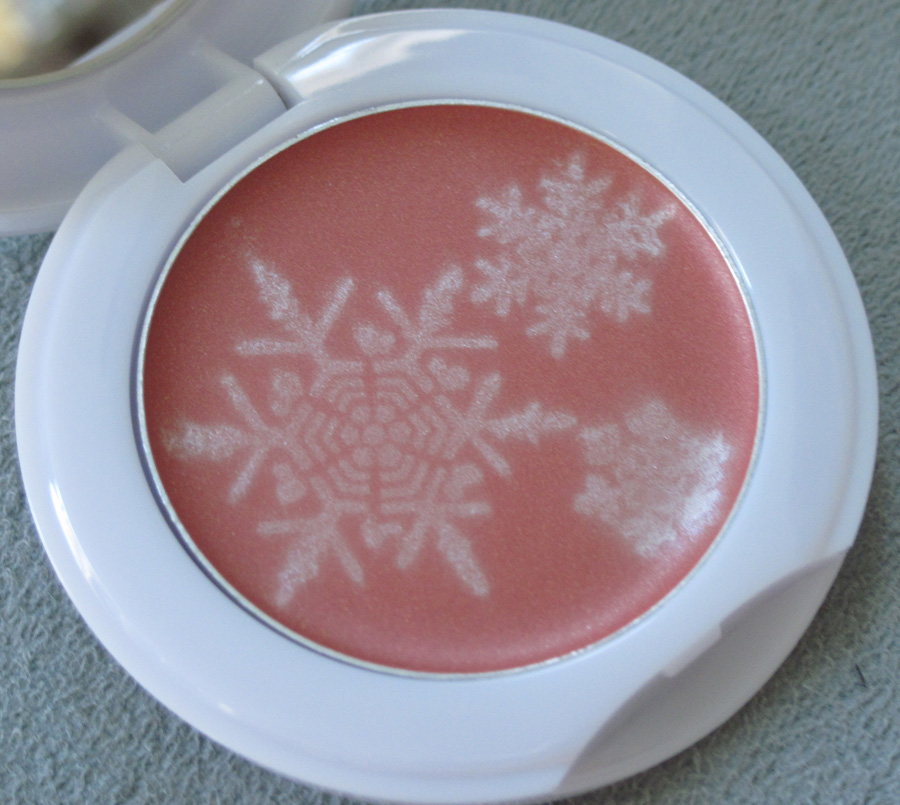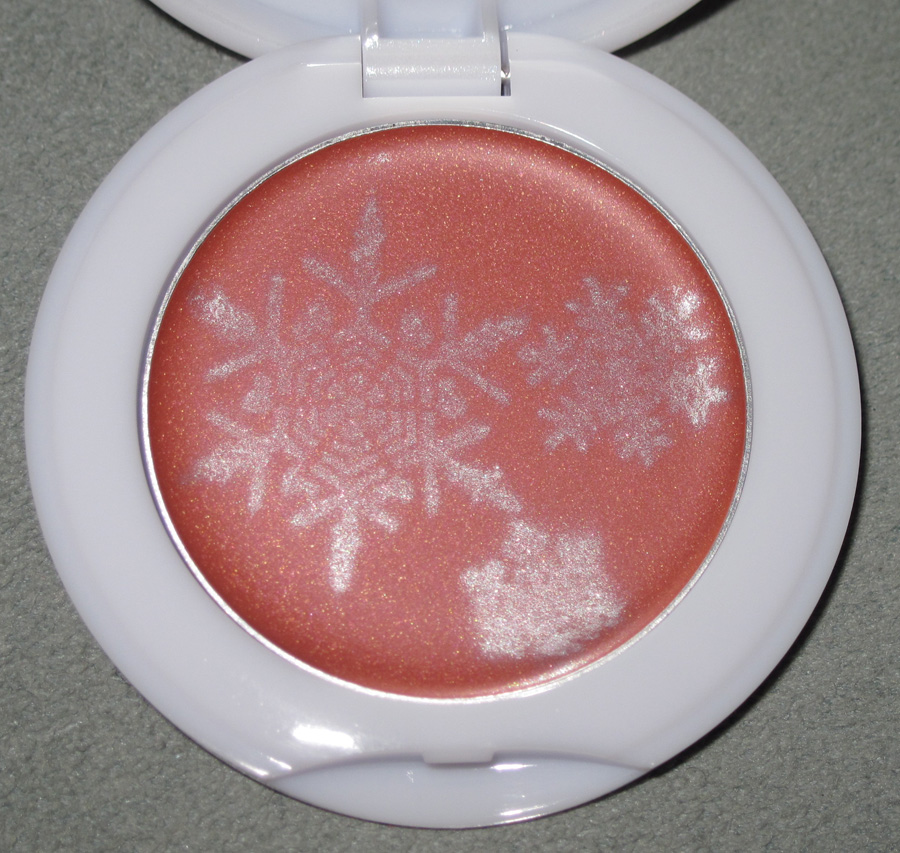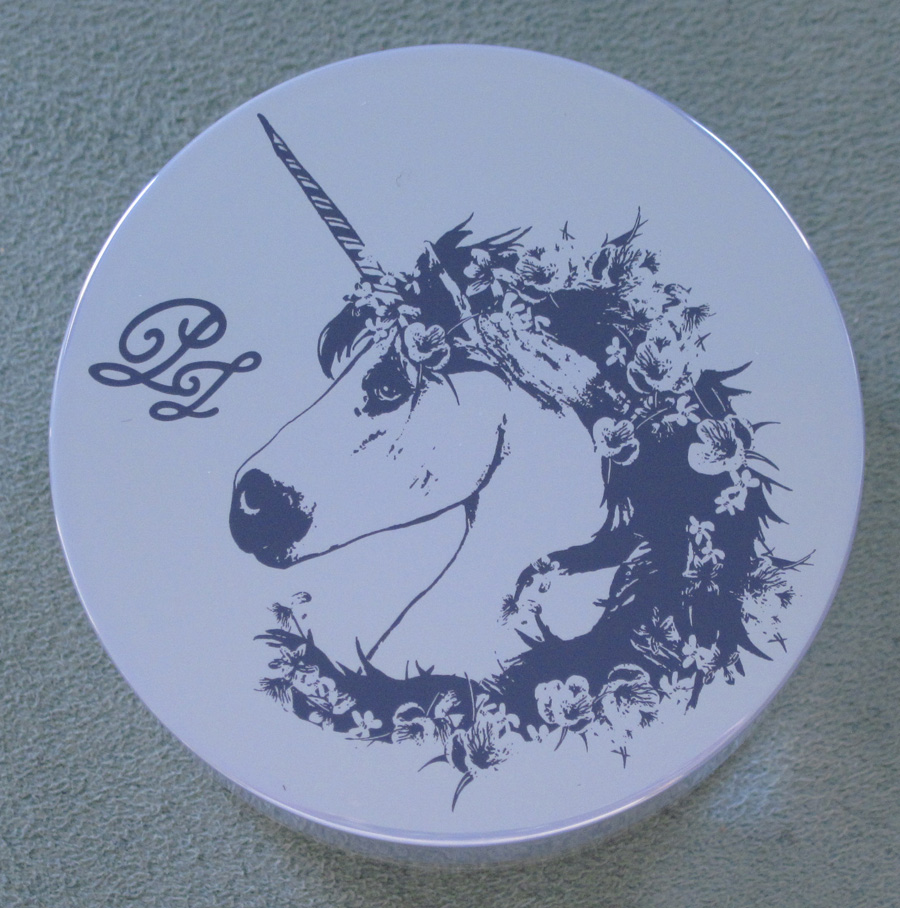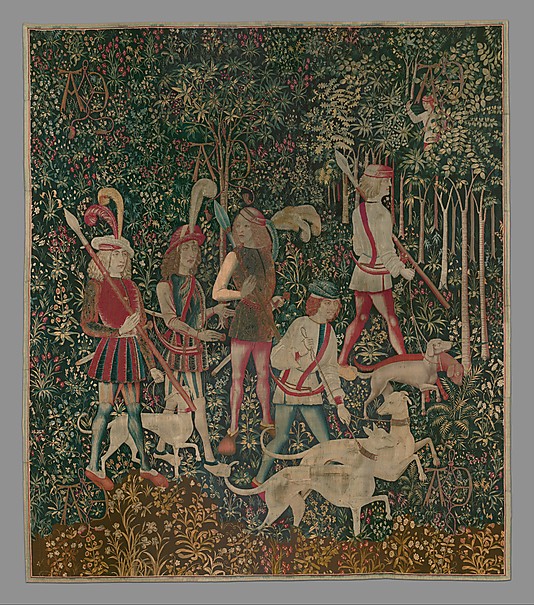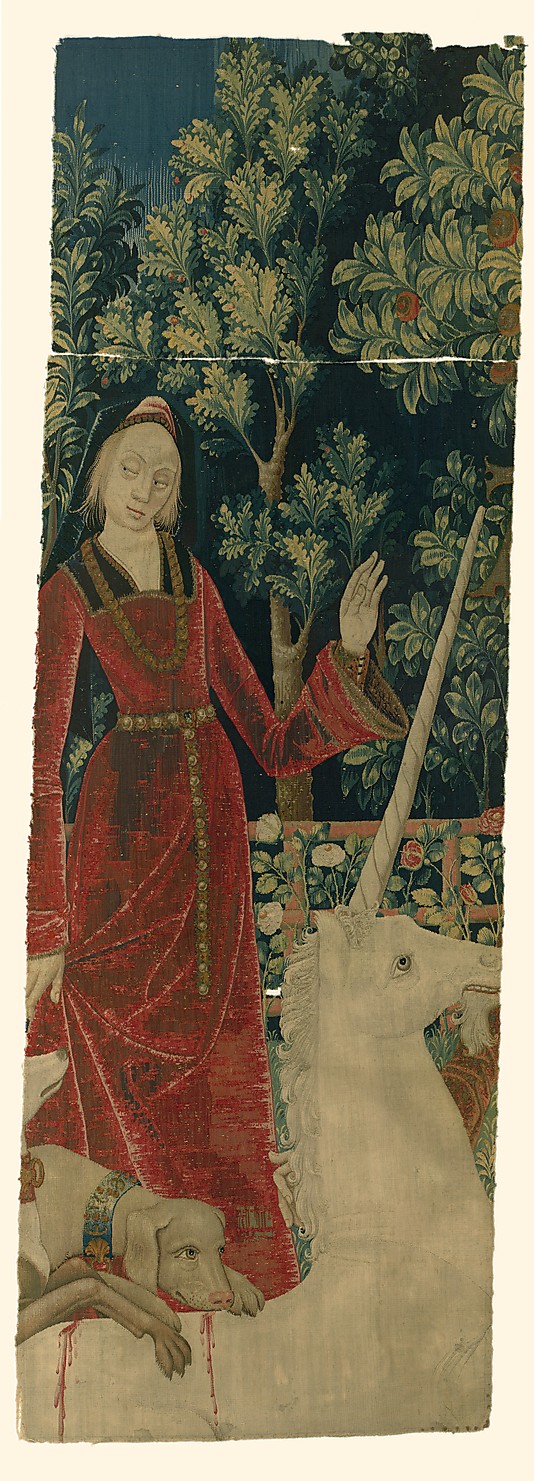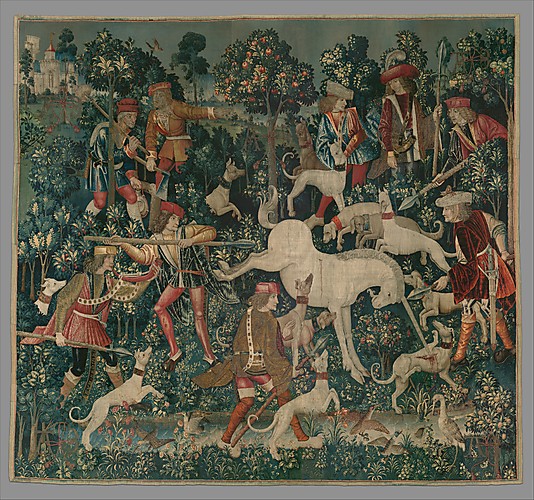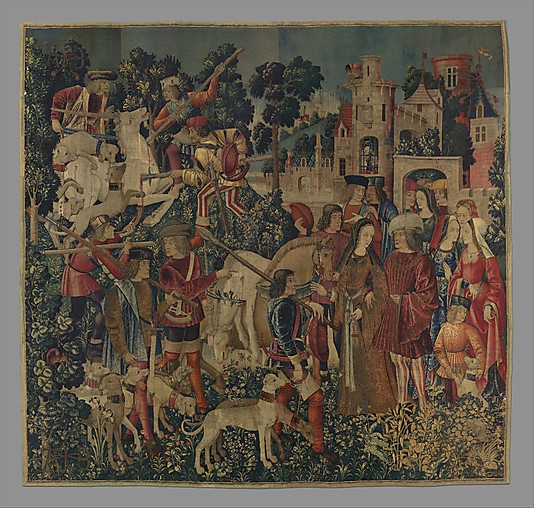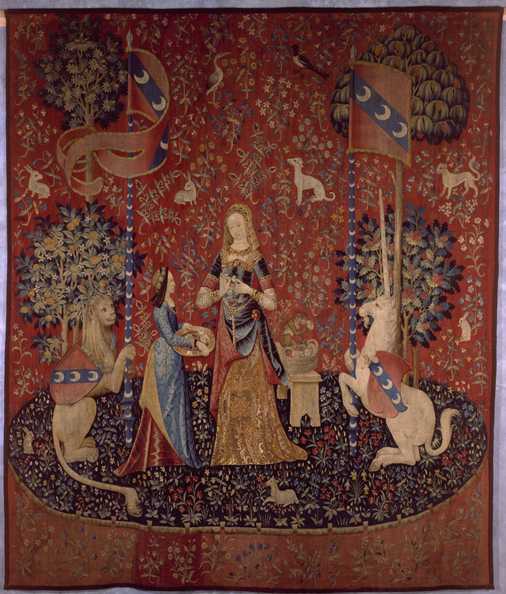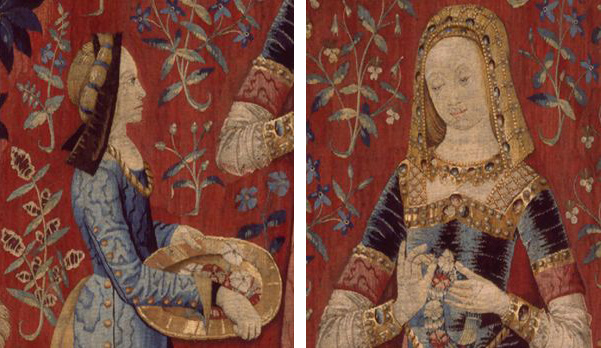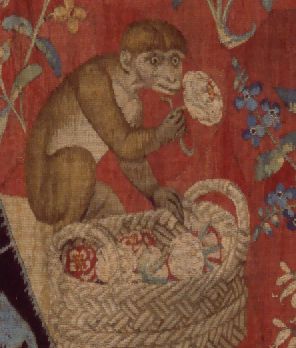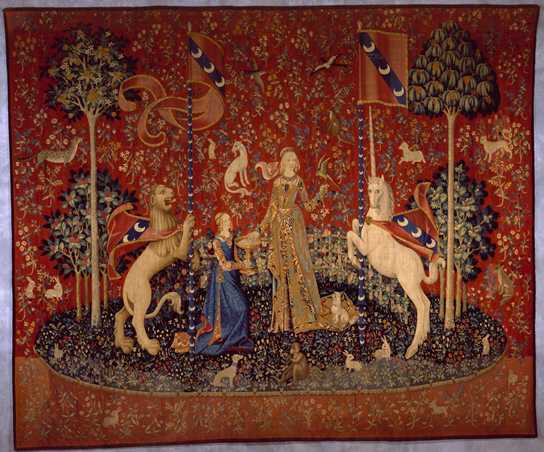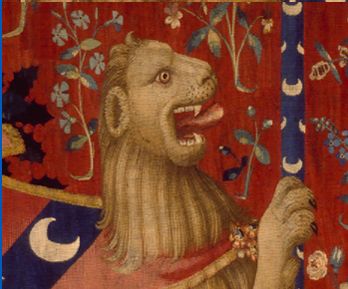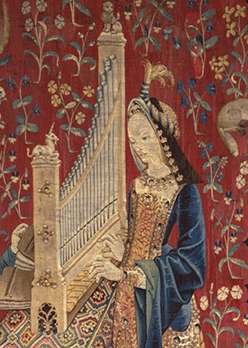Adorable squirrels and deer weren't the only critters Paul & Joe had up their sleeve for the holiday season. The company also released two makeup sets, Frozen Lilac and Sleigh Ride. Each contains a cream blush, loose powder and a satin pouch, all housed in a white box with a lilac wreath.
"Every snowflake is one of a kind and original – you too can be unique with this distinctive Paul & Joe print collection that will add a touch of winter wonderland magic to your holidays!"
I picked up Sleigh Ride.
Isn't this purse so cute?
The cream blush has a sprinkling of shimmery white snowflakes.
With flash:
The most interesting piece in the set, in my opinion, was the loose powder, which inexplicably features a unicorn with flowers it its flowing mane.
The unicorn was first described by the ancient Greeks and was revived as a symbol of purity in the Middle Ages. They were believed to be invincible and their horns were thought to have strong healing powers. Let's take a look at some unicorns in art history – namely, two sets of medieval tapestries which are perhaps the most well-known unicorns in art. We'll start with the Metropolitan Museum of Art's seven amazing tapestries depicting a hunt for the magical unicorn.
Here are the hunters entering the woods to prepare for the hunt.
The next tapestry depicts the unicorn in captivity. "He is tethered to a tree and constrained by a fence, but the chain is
not secure and the fence is low enough to leap over: The unicorn could
escape if he wished. Clearly, however, his confinement is a happy one,
to which the ripe, seed-laden pomegranates in the tree—a medieval symbol
of fertility and marriage—testify. The red stains on his flank do not
appear to be blood…rather, they represent juice dripping from bursting
pomegranates above. Many of the other plants represented here, such as
wild orchid, bistort, and thistle, echo this theme of marriage and
procreation: they were acclaimed in the Middle Ages as fertility aids
for both men and women. Even the little frog, nestled among the violets
at the lower right, was cited by medieval writers for its noisy mating."
Here is the taming of the unicorn. "He seems so docile, in fact,
that he is oblivious to the dog licking the wound on his back and stares
loving at the maiden who must have subdued him. Most of her figure is
missing, the result of damage incurred after the tapestries were looted
in 1793. The remaining traces include the maiden's right arm, clothed in
red velvet and visible between the beard and throat of the unicorn, and
her fingers, seen gently caressing the bottom of the animal's mane. She
sits in an enclosed garden (hortus conclusus), often a metaphor for the
purity of a maiden."
This next tapestry depicts the unicorn trying to defend itself against the hunters.
Finally, the unicorn is killed and taken to the castle. "It has been suggested that the doomed unicorn is an allegory for Christ
dying on the Cross; the large holly tree (often a symbol of the
Passion) rising from behind his head seems to reinforce this
association. In the other episode, at right, a lord and a lady receive
the body of the unicorn in front of their castle. They are surrounded by
their attendants, with more curious onlookers peering through windows
of the turret behind them. The dead animal is slung on the back of a
horse, his horn already cut off but still entangled in thorny oak
branches—probably symbolizing the Crown of Thorns. The rosary in the
hand of the lady and the three other women standing behind the lord
encourage a deeper reading of the scene, perhaps as a symbolic
Deposition by the grieving Virgin Mary, John the Baptist, and the Holy
Women."
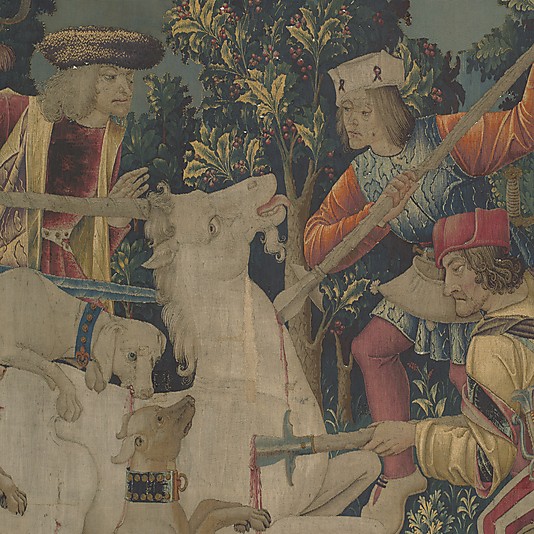
(images from metmuseum.org)
I much prefer the Lady and the Unicorn, the other famous tapestry series, to this one that portrays the killing of the poor creature. The Lady and the Unicorn tapestries, housed in the Musée National du Moyen Âge in France, were discovered in 1841 and depict the five human senses. The meaning of the sixth tapestry, called "To my only desire", remains a mystery.
I'm not sure exactly what order they go in, but here goes.
Sight:
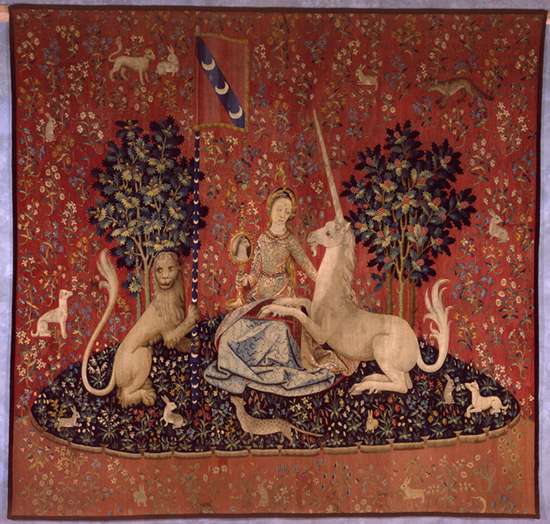
(image from musee-moyenage.fr)
Some details:
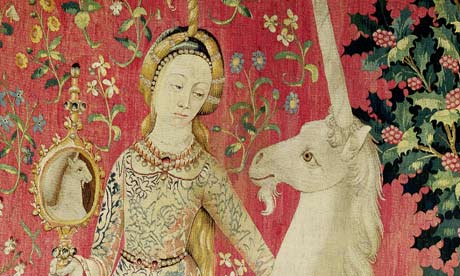
(image from guardian.co.uk)
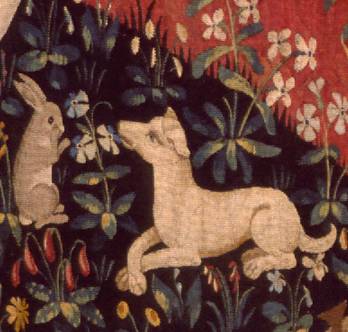
(image from musee-moyenage.fr)
Touch:
Details:
Smell:
The lady is making a flower wreath, while the monkey sniffs a flower he has taken from her basket.
Taste:
Mmm, candy!
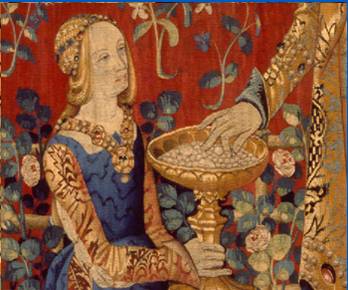
(images from musee-moyenage.fr)
Hearing:
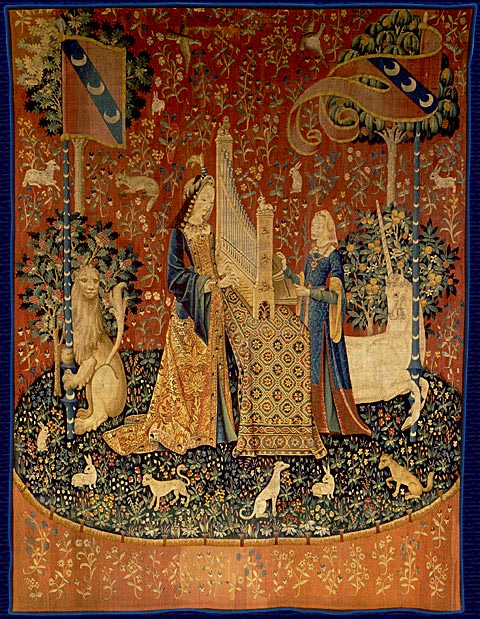
(image from en.wikipedia.org)
Finally, À mon seul désir:
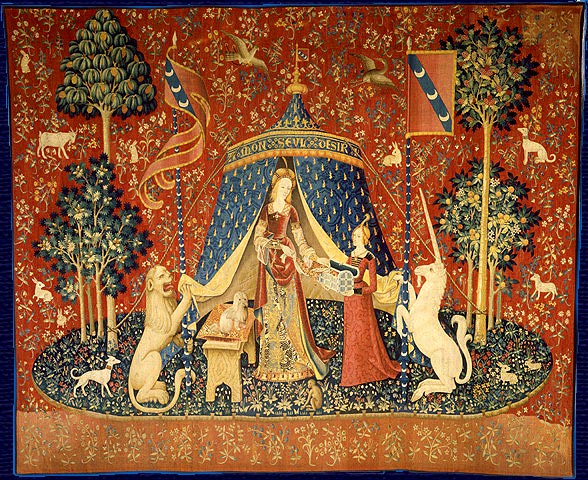
(images from en.wikipedia.org)
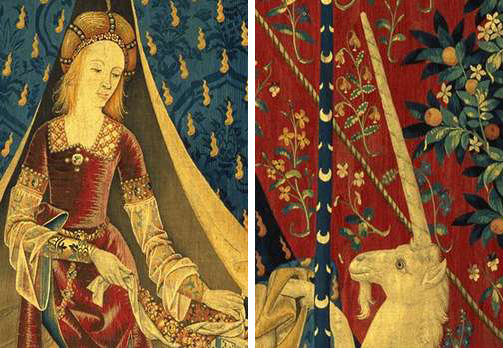
(images from musee-moyenage.fr)
You can also enjoy this lovely panoramic view of the tapestries:
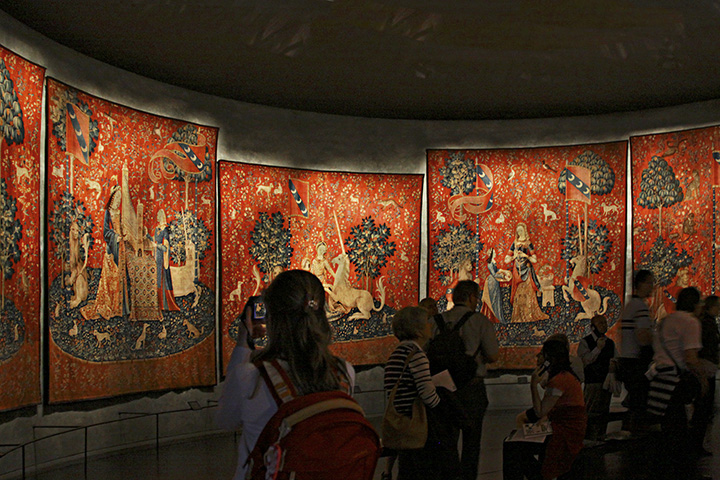 (image from pbase.com)
(image from pbase.com)
For more information on the meaning of each tapestry and why they were devoted to the five senses, check out this excellent post at the Culture Concept. You can also get this book.
Getting back to the Paul & Joe set, I found it to be an odd combination of motifs – lilacs, snowflakes and unicorns don't all seem to go together. I guess it is pretty wintry in the use of all-white packaging, from the outer box to the cream blush to the loose powder. And it will look cute sitting on a shelf for a holiday/winter exhibition, which is, of course, one of the most compelling reasons to buy it!
What do you think of this set? And do you have a fascination with unicorns? Me, not so much, but as you know I am obsessed with mermaids. 🙂


